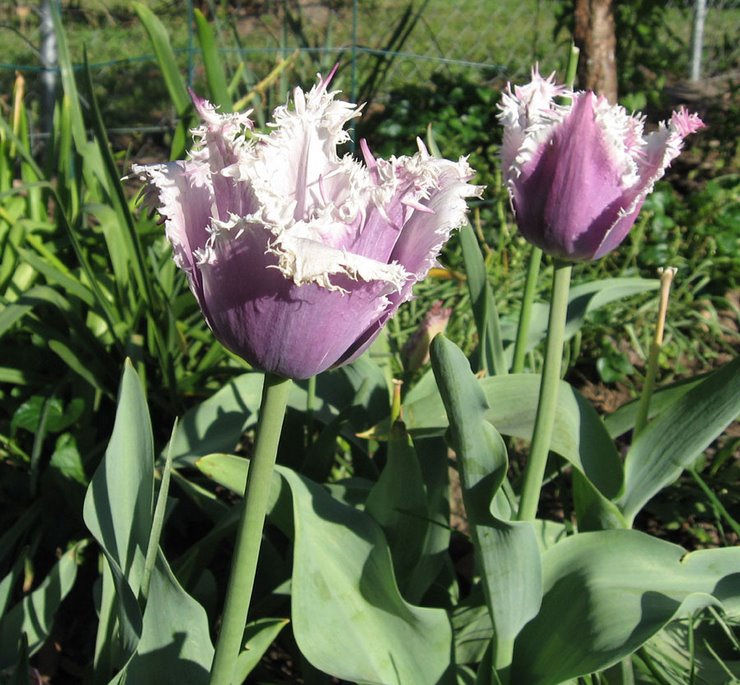Recently I had someone ask about their plants' leaves being scorched by the hot weather. That's an issue I'm dealing with as well, so I started reading up on it. I'd noticed that it seems to happen mostly to plants more recently planted rather than mature ones, so I was not surprised to find out that it is generally an issue with plants that have inadequate root systems. Many times it happens to plants that have not been in the ground long enough to establish a good root system, so in prolonged very hot weather, and with hot winds, the roots are simply unable to supply water to the foliage as fast as it is lost by transpiration from the leaves. Other times it may happen to more mature plants that have not developed good root systems or have had damage to their roots, such as roots dehydrated by too little winter moisture, or stunted by compacted soil or poor drainage. Often the effects of a dry winter are seen in mid-summer when plants struggle with scorched leaves.
Scorched leaves may be dropped by the plant, but that does not necessarily mean it is dead. When leaf scorch happens every year, the plant is weakened, and will be more likely to succumb to disease or insect pests.
Too many times, people start watering scorched plants heavily to try to help them make it, and make matters worse, basically drowning the plant. Or they may water a little every day, encouraging the plant's roots to stay shallow rather than growing deep.
The best thing is to water less often, and more deeply, encouraging the plant's roots to grow deep into the soil. Use mulch to help keep soil moisture from simply evaporating in the heat. A layer of wood or bark chips, or composted leaves will help retain moisture and cool the soil. Be careful not to damage roots or bark of plants when digging or mowing near them.
I use soaker hoses for watering many of my flower beds, so that the plants get the long, slow trickle of water that is best for them. If you water from a hose or watering can, try to do it in the morning rather than the evening. Water sitting on plants overnight may encourage disease.
Plants grown in containers rather than in the ground will need to be watered more often. I give them a little extra help by using Soil Moist when I plant them. This is a commercial product that comes as granules. When it gets wet, it swells and absorbs a lot of water, then re-releases it slowly as the plant needs it. They recommend using it when you plant, so that it's incorporated into the soil at the root level. It does no good to drop in onto the soil surface. If you want to add it to your already-potted plants, use a pencil or dowel rod to poke holes into the soil down to the level of the plant's roots. It needs to be at least 3-5 inches deep. Drop a pinch of the Soil Moist granules into each hole, and then re-cover the hole with soil. Notice the instructions about how much to use for your pot size. More is not better!
Another thing I have found that helps is to provide your plant's roots with a natural assistance from
mycorrhizal fungus. Most plants will form a symbiotic relationship with mycorrhiza, which colonize the plant roots and then extend far out into the soil. This fungus helps the plant to absorb more water and nutrients from the soil. It improves a plant's ability to cope with drought. In return, the plant provides the fungus with carbon, so they both benefit from the relationship.
Although mycorrhizal fungus occurs naturally in the soil, it can be reduced by digging, hoeing, tilling, or chemicals in fertilizers or insecticides, and may take years to become re-established. There are commercial products available that allow a gardener to inoculate plants with the fungus to jump-start this process. The type easiest to find in garden centers around here is a granular product called Myke. You apply this to the root ball when planting. Sometimes I can also find a liquid called Thrive, which can be applied to a plant already in the ground. This is simply mixed into the watering can. I use both of these products, and can see the difference when I do use it. Plants become established more quickly, and deal better with weather extremes.
July and August are hard on plants, but these are some of the ways we can help them cope.

2 comments:
It looks like Lowe's and Home Depot have the Soil Moist, so I can get that locally, but I haven't found a local store with the Thrive stuff yet.
Hey - - looks like this would be a good place to find
hints to help a kindergarten-type gardener.
Many thanks!
Post a Comment